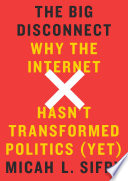

The book begins by exploring the concept of the digital divide, which refers to the gap between those who have easy access to digital technology and those who do not. This divide is not just about technology access but also about the skills and knowledge necessary to use technology effectively. The author argues that this divide can lead to significant social and economic inequalities. The digital divide affects education, job opportunities, and access to information, making it a critical issue in today's society. The book emphasizes the need for policy changes and community initiatives to bridge this gap and ensure that everyone can benefit from the digital age.
Continue readingOne of the central themes of the book is how technology, particularly social media, has changed the way we interact with one another. The author discusses the paradox of connectivity, where people are more connected than ever through digital means, yet feel more isolated. The book highlights studies showing that excessive use of social media can lead to increased feelings of loneliness and depression. The author advocates for a more mindful approach to technology use, encouraging readers to prioritize face-to-face interactions and cultivate deeper relationships.
Continue readingThe book delves into the psychological impacts of living in a hyper-connected world. It discusses how constant notifications, information overload, and the pressure to be always available can lead to stress and anxiety. The author presents research linking excessive screen time to mental health issues, particularly in younger generations. The book suggests strategies for managing digital consumption, such as setting boundaries, taking regular breaks from screens, and engaging in activities that promote mental well-being.
Continue readingEducation is a key focus in 'The Big Disconnect,' with the author arguing that schools must adapt to prepare students for a technology-driven world. This includes not only teaching technical skills but also fostering critical thinking and digital literacy. The book advocates for curricula that integrate technology in meaningful ways, encouraging students to understand the implications of their digital actions. The author also emphasizes the importance of teaching ethical technology use and the potential consequences of online behavior.
Continue readingIn response to the challenges posed by technology, the book introduces the concept of digital detox—taking intentional breaks from technology to reconnect with the physical world. The author shares practical tips for implementing a digital detox, such as setting specific times for technology use, engaging in outdoor activities, and practicing mindfulness. The book argues that these practices can enhance overall well-being and improve relationships by allowing individuals to be present in the moment.
Continue readingThe book explores how technology is transforming the workplace, with remote work and digital collaboration becoming more prevalent. The author discusses the benefits and challenges of this shift, including increased flexibility and the potential for burnout. The book emphasizes the need for organizations to foster a healthy work culture that prioritizes employee well-being and encourages work-life balance. The author also suggests that workers must develop adaptability and resilience to thrive in this evolving landscape.
Continue readingFinally, 'The Big Disconnect' calls for a collective effort to promote responsible technology use. The author argues that individuals, communities, and policymakers must work together to create a digital environment that prioritizes mental health and social connection. This includes advocating for regulations that protect users from harmful practices, such as manipulative algorithms and data privacy violations. The book encourages readers to be proactive in shaping the digital landscape to ensure it serves the greater good.
Continue reading